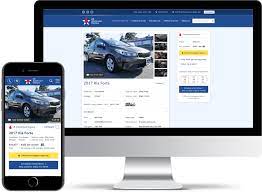Modern retailing in the automotive industry now includes an ability for shoppers to perform much of their transaction online. But even before buying a car online was common, shoppers spent more than 14 hours online performing research. Much of it is conducted on third-party sites, though inquiries through a dealer’s website are among the hottest leads generated.
Leads from a vehicle details page, or VDP, inquire about a specific unit in the store’s inventory. Although every dealership website has VDPs by the dozens or even hundreds, it can be a make-or-break moment in the sales process for the shopper. Whether they decide to do business with you or one of your competitors can lie in this one listing.
What do your customers expect to find when they explore a VDP? Here are five things.
An actual vehicle for sale
There has become a trend among some dealers to have perennial VDPs that are representative of common models they typically carry at any given time. This trend seems to be borne out of fast-moving inventory, making it difficult to keep up with the changeover on the lot.


Unsold inventory
Again, it’s time-consuming to stay on top of VDPs when cars are flying off the lot. What customers are expecting when they shop online are models that are currently available, not already sold. When an online customer is inquiring about a vehicle that’s already delivered, it appears as one of two things: the dealer is using the VDP as a lead generator in the shady bait-and-switch style, or their website is simply out of date.
It’s particularly important that vehicles aren’t sold and/or delivered when online buying processes are available. Should a customer attempt a credit application, purchase agreement, or financing on a unit with a deal already written, there’s a great chance they’ll abandon their business with your store altogether, leaving frustrated.
| Related: How to improve your car dealership’s online retailing strategy – Lissette Gole, Head of Auto Retail at Google |
Accurate description and equipment
As important as the unit being available is a complete description of it. For new vehicles, a build sheet should be available for shoppers to look over as well as a written description that accurately reflects its equipment in enticing language. It’s sales copy, and it’s crucial that it’s well-written and precise. Incorrect VDPs can cause otherwise profitable deals with happy customers to go sideways if the vehicle’s representation is unintentionally wrong or incomplete.
For used cars, it’s wise to include a report on the vehicle’s condition, mentioning major and minor issues and flaws the shopper will see on a physical inspection.
Quality pictures
Human shoppers are visual creatures. The same vehicle captured in a well-lit setting and positioned well will generate more attention than quickly snapped photos with no regard for the surroundings. New cars and used cars alike should be photographed consistently – the same location, similar lighting, and a background that doesn’t compete with the car being listed.
For used cars, images should attempt to reflect the actual condition rather than hide the flaws. A customer who sees scratches, dents, or marks in person that were ‘hidden’ on the VDP pictures will wonder what else is being covered up.
An easy way to contact the dealership
VDPs are intended to be the penultimate stage in a sales funnel. Functional, well-done VDPs should generate leads on the exact unit the lead comes from. These should turn into relatively smooth, easy sales from highly intentional shoppers.
To that end, there should always be several options for a customer to contact the dealership at a single click. Options should include buying the vehicle online, submitting a credit application, emailing the dealership, beginning a chat, or calling the store.
Keep in mind that anything more than a single click to contact reduces the likelihood of the customer moving ahead. Switching windows to write an email or even making them open their phone to manually dial the number can be enough to make them second-guess the next step.
VDPs are a powerful tool for dealership websites, and they are a lot of work to maintain. Doing it well enhances your store’s online presence while missing the mark can take away from your image.
Did you enjoy this article from Jason Unrau? Read other articles on CBT News here. Please share your thoughts, comments, or questions regarding this topic by submitting a letter to the editor here, or connect with us at newsroom@cbtnews.com.
Be sure to follow us on Facebook and Twitter to stay up to date or catch-up on all of our podcasts on demand.
While you’re here, don’t forget to subscribe to our email newsletter for all the latest auto industry news from CBT News.










